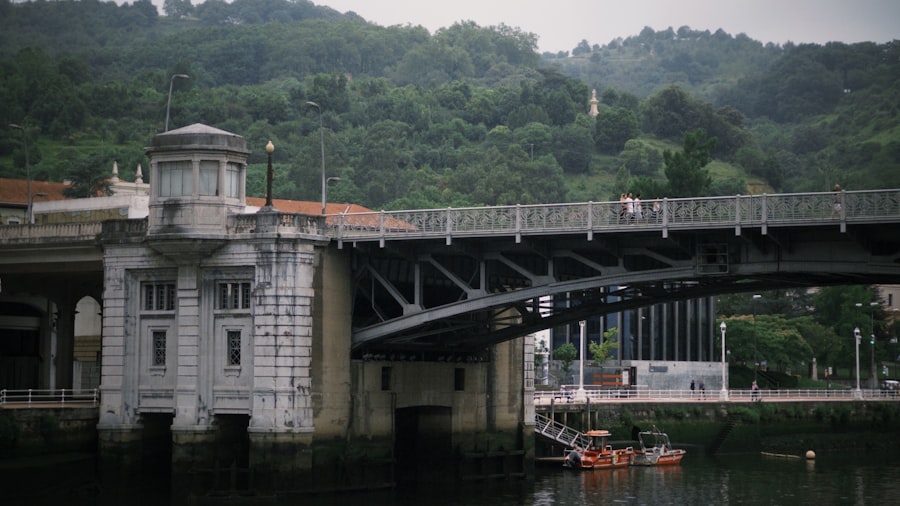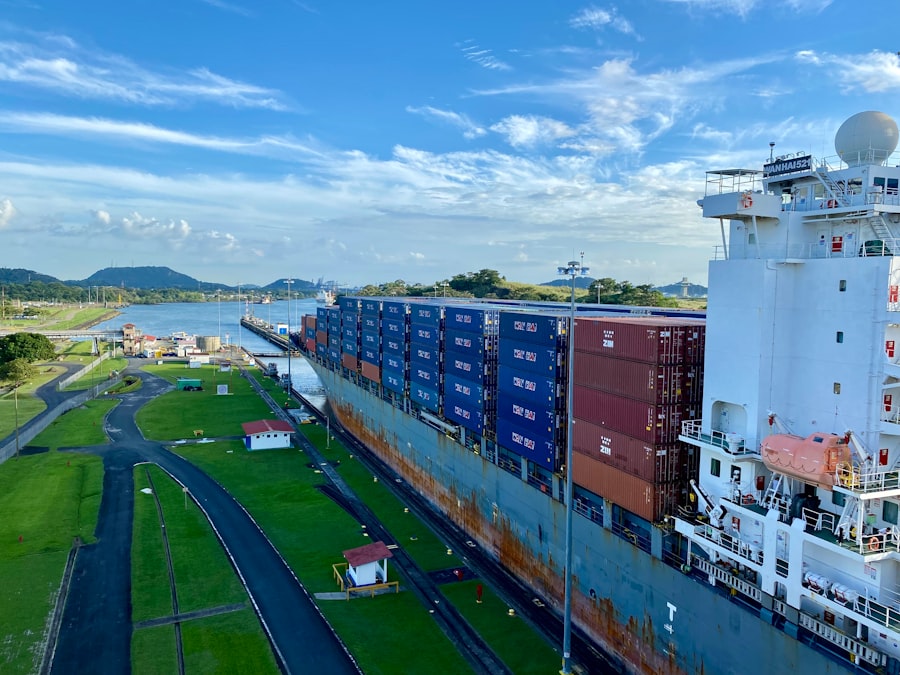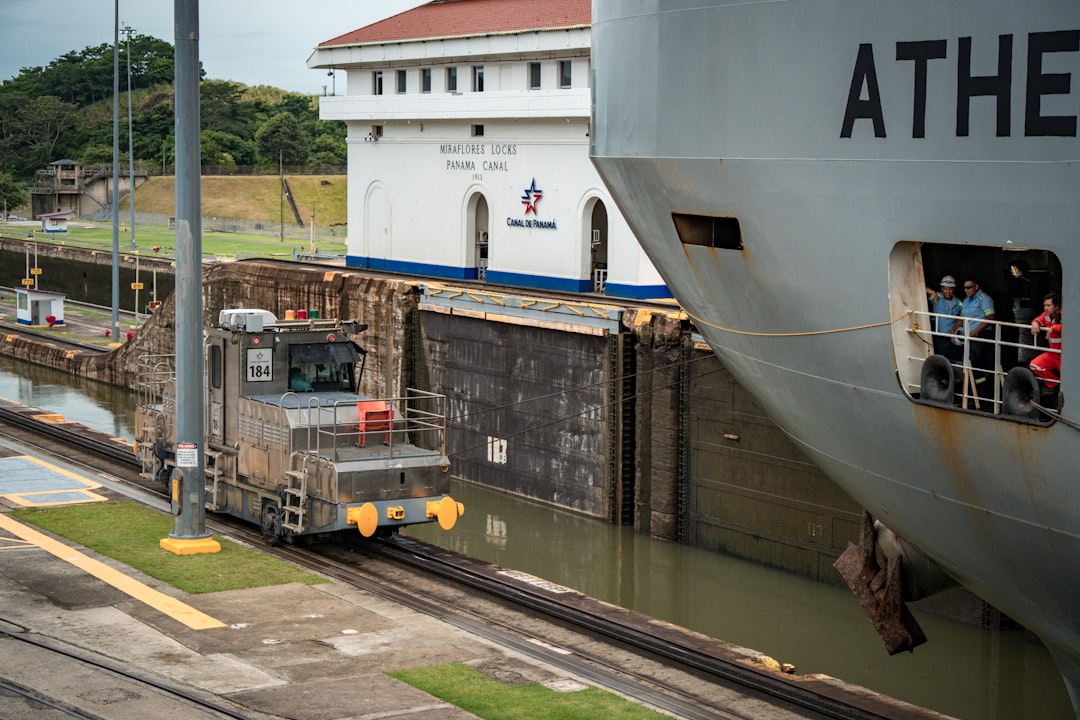The Panama Canal, a marvel of engineering and a critical artery for global trade, has long been subject to various navigational restrictions. These limitations are essential for ensuring the safety and efficiency of maritime traffic through the canal, which connects the Atlantic and Pacific Oceans. The canal’s unique geography, combined with its heavy usage, necessitates a set of regulations that govern vessel movements, draft limitations, and transit schedules.
As the shipping industry continues to evolve, understanding these navigational restrictions becomes increasingly important for stakeholders, including shipping companies, port authorities, and environmental organizations. Navigational restrictions in the Panama Canal are not merely bureaucratic hurdles; they are vital for maintaining the integrity of one of the world’s busiest maritime routes. The canal’s narrow passages and varying water depths pose significant challenges for large vessels, particularly as the size of container ships has increased dramatically over the years.
Consequently, these restrictions are designed to mitigate risks associated with collisions, groundings, and other maritime accidents. As global trade dynamics shift and environmental concerns grow, the Panama Canal Authority must continually adapt its policies to balance safety, efficiency, and ecological sustainability.
Key Takeaways
- Navigational restrictions in the Panama Canal have a significant impact on the shipping industry and global trade.
- Historical overview reveals the evolution of navigational restrictions in the Panama Canal and their impact on maritime traffic.
- Types of navigational restrictions include size limitations, draft restrictions, and weather-related closures, affecting vessel transit through the canal.
- Navigational restrictions have economic implications, safety concerns, and environmental considerations for the Panama Canal and the shipping industry.
- Technological advancements and safety measures are being implemented to mitigate navigational restrictions and improve transit efficiency in the Panama Canal.
Historical Overview of Navigational Restrictions in Panama Canal
The history of navigational restrictions in the Panama Canal dates back to its inception in the early 20th century. Originally completed in 1914, the canal was designed to facilitate maritime trade by providing a shortcut between the Atlantic and Pacific Oceans. However, from the outset, it became clear that managing vessel traffic would require stringent regulations.
Early navigational restrictions focused primarily on vessel size and draft limitations, as the canal’s locks were not designed to accommodate the larger ships that would eventually dominate global shipping. Over the decades, as shipping technology advanced and vessel sizes increased, the Panama Canal Authority implemented additional restrictions to ensure safe passage. The introduction of the Panamax standard in the 1960s marked a significant milestone in this evolution.
This standard defined the maximum dimensions for vessels transiting the canal, which helped streamline operations but also highlighted the limitations of the existing infrastructure. The expansion of the canal in 2016 with the addition of the new set of locks allowed for larger vessels known as New Panamax or Neo-Panamax ships, further complicating navigational restrictions as authorities sought to balance increased traffic with safety concerns.
Types of Navigational Restrictions in Panama Canal

Navigational restrictions in the Panama Canal can be categorized into several types, each addressing specific challenges associated with vessel transit. One of the most significant types is draft restrictions, which dictate how deep a vessel can sit in the water while navigating through the canal. These restrictions are influenced by factors such as seasonal rainfall, water levels in Gatun Lake, and maintenance activities.
During periods of drought or low water levels, draft restrictions may be tightened, impacting shipping schedules and cargo capacities. Another critical category of navigational restrictions pertains to vessel size and dimensions. The original locks of the Panama Canal were designed to accommodate vessels up to 965 feet long and 106 feet wide.
However, with the advent of larger ships, these dimensions became increasingly restrictive. The introduction of the new locks in 2016 allowed for vessels up to 1,200 feet long and 160 feet wide, but even these dimensions impose limitations on certain types of cargo ships. Additionally, there are restrictions related to vessel speed and maneuverability within the canal’s narrow channels, which are crucial for preventing accidents and ensuring safe navigation.
Impact of Navigational Restrictions on Shipping Industry
| Impact of Navigational Restrictions on Shipping Industry |
|---|
| 1. Increase in shipping time and costs |
| 2. Disruption of supply chains |
| 3. Environmental impact due to longer routes |
| 4. Risk of accidents and collisions |
| 5. Decrease in efficiency and productivity |
Navigational restrictions in the Panama Canal have profound implications for the shipping industry. For shipping companies, these limitations can affect operational efficiency and profitability. When draft restrictions are imposed due to low water levels or maintenance activities, vessels may be forced to reduce their cargo loads or delay transit altogether.
This can lead to increased shipping costs and disruptions in supply chains, particularly for industries reliant on just-in-time delivery models. Moreover, navigational restrictions can influence shipping routes and logistics strategies. Companies may opt for alternative routes or ports if they anticipate delays or complications associated with canal transit.
This decision-making process can have cascading effects on global trade patterns, as shifts in shipping routes may alter demand for certain ports or regions. As a result, understanding and adapting to navigational restrictions is crucial for shipping companies seeking to maintain competitiveness in an increasingly complex maritime landscape.
Safety Measures and Regulations in Panama Canal
Safety measures and regulations play a pivotal role in managing navigational restrictions within the Panama Canal. The Panama Canal Authority has established a comprehensive framework designed to enhance safety during vessel transit. This includes mandatory pilotage for all vessels transiting the canal, which ensures that experienced professionals guide ships through its narrow channels and complex lock systems.
The presence of pilots significantly reduces the risk of accidents caused by human error or navigational challenges. In addition to pilotage requirements, the canal authority enforces strict adherence to speed limits and maneuvering protocols. These regulations are essential for preventing collisions and groundings within the canal’s confined spaces.
Furthermore, regular safety drills and training programs for crew members help ensure that all personnel are well-prepared to respond to emergencies should they arise during transit. By prioritizing safety through these measures, the Panama Canal Authority aims to maintain a secure environment for both vessels and personnel navigating this vital waterway.
Environmental Considerations in Navigational Restrictions

Environmental considerations are increasingly influencing navigational restrictions in the Panama Canal. As global awareness of climate change and ecological sustainability grows, there is a heightened focus on minimizing the environmental impact of maritime activities. The canal’s unique ecosystem is home to diverse flora and fauna, making it imperative for authorities to implement measures that protect these natural resources while facilitating maritime trade.
To address this issue, navigational restrictions may be imposed during certain periods to limit vessel traffic and reduce potential pollution from ship emissions or ballast water discharge. Additionally, initiatives aimed at preserving biodiversity within the canal’s surrounding areas have led to increased scrutiny of vessel operations and their potential impact on local ecosystems.
By integrating environmental considerations into navigational restrictions, the Panama Canal Authority seeks to strike a balance between economic activity and ecological preservation.
Technological Advancements to Mitigate Navigational Restrictions
Technological advancements have played a crucial role in mitigating navigational restrictions within the Panama Canal. Innovations in navigation systems, communication technologies, and vessel design have enhanced safety and efficiency during transit. For instance, modern GPS-based navigation systems allow vessels to receive real-time information about water levels, weather conditions, and traffic patterns within the canal.
This data enables ship captains to make informed decisions regarding speed and maneuvering, reducing the likelihood of accidents. Moreover, advancements in vessel design have led to more efficient hull shapes and propulsion systems that can better navigate through restricted waterways. Some shipping companies are investing in eco-friendly technologies that reduce emissions and improve fuel efficiency while complying with environmental regulations.
These innovations not only help mitigate navigational restrictions but also align with broader sustainability goals within the shipping industry.
Economic Implications of Navigational Restrictions in Panama Canal
The economic implications of navigational restrictions in the Panama Canal are far-reaching and multifaceted. For countries reliant on maritime trade, any limitations imposed by the canal can have significant consequences for their economies. Delays or increased costs associated with transit can ripple through supply chains, affecting everything from manufacturing timelines to consumer prices.
As such, stakeholders must remain vigilant about potential changes in navigational policies that could impact their operations. Additionally, navigational restrictions can influence investment decisions within the shipping industry. Companies may weigh the costs associated with potential delays against the benefits of utilizing the canal as a shortcut between oceans.
This calculus can lead to shifts in investment toward alternative routes or ports if navigational challenges become too burdensome. Ultimately, understanding these economic implications is essential for policymakers and industry leaders seeking to navigate an ever-evolving maritime landscape.
Future Outlook for Navigational Restrictions in Panama Canal
The future outlook for navigational restrictions in the Panama Canal is shaped by several factors, including technological advancements, environmental considerations, and evolving global trade dynamics. As shipping companies continue to innovate and adapt their operations to meet changing demands, it is likely that navigational policies will also evolve in response. The ongoing expansion of vessel sizes may necessitate further adjustments to draft limitations and lock capacities as authorities strive to accommodate larger ships while ensuring safety.
Moreover, environmental pressures will likely play an increasingly prominent role in shaping navigational restrictions moving forward. As climate change impacts become more pronounced, there may be a greater emphasis on sustainable practices within maritime operations. This could lead to stricter regulations regarding emissions and pollution control measures during transit through the canal.
Ultimately, stakeholders must remain proactive in addressing these challenges while balancing economic interests with environmental stewardship.
Case Studies of Navigational Restrictions in Panama Canal
Several case studies illustrate how navigational restrictions have impacted operations within the Panama Canal over time. One notable example occurred during a severe drought in 2015 when water levels in Gatun Lake dropped significantly due to reduced rainfall. In response, the Panama Canal Authority implemented stringent draft restrictions that limited vessel capacities during transit.
This situation led to widespread disruptions across global supply chains as shipping companies scrambled to adjust their schedules and cargo loads. Another case study involves the introduction of new technologies aimed at enhancing navigation safety within the canal. In recent years, several shipping companies have adopted advanced navigation systems that utilize real-time data analytics to optimize transit routes through restricted areas.
These innovations have not only improved operational efficiency but also contributed to reducing accidents associated with human error during navigation.
Addressing Navigational Restrictions in Panama Canal
Navigational restrictions in the Panama Canal are an essential aspect of ensuring safe and efficient maritime traffic through this vital waterway. As global trade continues to evolve alongside technological advancements and environmental considerations, it is crucial for stakeholders to remain informed about these limitations and their implications for shipping operations. By understanding historical trends and current challenges associated with navigational restrictions, industry leaders can better navigate an increasingly complex maritime landscape.
Moving forward, collaboration among stakeholders—including shipping companies, regulatory authorities, and environmental organizations—will be key to addressing navigational restrictions effectively. By embracing innovation while prioritizing safety and sustainability, stakeholders can work together to ensure that the Panama Canal remains a critical conduit for global trade well into the future.
The recent restrictions on the Panama Canal have sparked significant interest and concern among global trade experts and businesses relying on this crucial maritime route. These restrictions, primarily due to drought conditions affecting water levels, have led to delays and increased costs for shipping companies. For a deeper understanding of the geographical and environmental factors influencing such global trade routes, you can explore a related article on MyGeoQuest.
WATCH NOW! Unlocking Disaster: 7 Choke Points That Could Fracture Our Connected World Overnight
FAQs
What are the current restrictions in place at the Panama Canal?
As of [date], the Panama Canal has implemented restrictions on the draft of vessels allowed to transit due to water levels in Gatun Lake. Vessels with a draft exceeding the specified limit are required to trim or offload cargo to meet the restrictions.
Why are there restrictions on the draft of vessels at the Panama Canal?
The restrictions on vessel draft are put in place to ensure the safe and efficient transit of ships through the Panama Canal. The water levels in Gatun Lake, which is a key part of the canal’s operation, can fluctuate due to factors such as rainfall and drought. By imposing draft restrictions, the Panama Canal Authority can manage the water levels and prevent potential accidents or disruptions to canal operations.
How do draft restrictions at the Panama Canal impact shipping operations?
Draft restrictions at the Panama Canal can impact shipping operations by requiring vessels to adjust their cargo load or trim in order to meet the specified draft limit. This may result in additional costs and logistical challenges for shipping companies, as well as potential delays in transit times.
Are there any alternative routes for vessels affected by the draft restrictions at the Panama Canal?
Vessels that are unable to meet the draft restrictions at the Panama Canal may need to consider alternative routes, such as the Cape of Good Hope or the Strait of Magellan. However, these alternative routes can result in longer transit times and increased fuel consumption, which may have financial and operational implications for shipping companies.
How long are the draft restrictions expected to be in place at the Panama Canal?
The duration of the draft restrictions at the Panama Canal is dependent on the water levels in Gatun Lake and the overall operational conditions of the canal. The Panama Canal Authority regularly assesses the situation and provides updates on any changes to the restrictions. It is advisable for shipping companies to stay informed about the latest developments and plan their operations accordingly.
